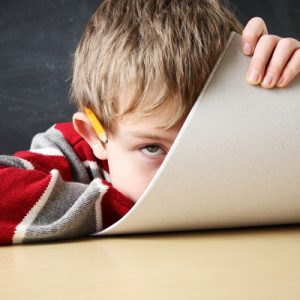Prevalence, medication, and therapy variations for child Attention Deficit Hyperactivity Disorder (ADHD) in Michigan
 This brief examines ADHD treatment for Michigan children (aged 4 to 17), including medication and behavioral therapy, and regional variation in treatment patterns.
This brief examines ADHD treatment for Michigan children (aged 4 to 17), including medication and behavioral therapy, and regional variation in treatment patterns.
Attention deficit hyperactivity disorder (ADHD) is the most common neurobiological disorder among children in the U.S. Hyperactivity, impulsiveness, and difficulty staying focused or paying attention are common symptoms of ADHD, and may continue into adulthood. Children with ADHD will often have other co-occurring mental health conditions or learning disabilities and tend to have more school-based and health care needs than children without ADHD.
Research has established medication and behavioral therapy as the most effective treatments for ADHD. Medication for ADHD, most commonly stimulant medications such as methylphenidate (e.g., Ritalin) or amphetamines (e.g., Adderall), and behavioral therapy, including psychotherapy or social skills training, can be prescribed alone or in combination. In the American Academy of Pediatrics’ (AAP) most recent guidelines for ADHD diagnosis, evaluation, and treatment, recommendations vary by age group. Behavioral therapy is recommended first for preschool children, supplemented by ADHD medication if therapy does not improve symptoms. For older children, the AAP recommends ADHD medications with or without behavioral therapy. Combination therapy is preferred, particularly for elementary children.
In practice, many children treated for ADHD are prescribed only ADHD medication; many fewer receive behavioral therapy. ADHD medication can reduce symptoms and behaviors, but has side effects—such as poor appetite or difficulty sleeping— and may not be a cure-all in the long term. Behavioral therapy can improve a child’s immediate behaviors and develop skills that can carry into adulthood. Recent evidence indicates that behavioral therapy can be more effective as a first line treatment for elementary school children than starting with medication. A recent U.S. Centers for Disease Control and Prevention (CDC) report on ADHD treatment for younger children found that medication treatment was more common than psychological services.
Key findings include:
- In 2011, 8.8 percent (5.1 million) of U.S. children aged 4 to 17 were reported by parents as having an ADHD diagnosis. Approximately 6.3 percent (approximately 17,000 patients) of privately insured children in the Michigan study group had a claim related to ADHD in 2013. ADHD among children in Michigan ranged from 4.6 percent of children in the Dearborn Hospital Referral Region (HRR) to 7.3 percent in the St. Joseph and Muskegon HRRs.
- Once diagnosed with ADHD, most Michigan children were prescribed ADHD medication alone (52.5 percent), which was higher than the national rate (43.3 percent).
- The rate of ADHD medication alone to treat children with ADHD varied by region within Michigan, with Royal Oak at 44.5 percent compared to Petoskey at 67.5 percent.
- About 9.7 percent of Michigan children received behavioral therapy alone for ADHD, and 30.7 percent received both ADHD medication and behavioral therapy.
- Compared to national treatment rates, Michigan children with ADHD generally had lower rates of treatment via behavioral therapy only and higher rates of treatment through ADHD medication only across all age groups, with the exception of the youngest age group (aged 4 to 5).
- Rates of behavioral therapy among children with ADHD varied considerably by geography in Michigan. Only 4.3 percent of children diagnosed with ADHD in the Petoskey HRR received behavioral therapy alone, while 13.5 percent of children received behavioral therapy alone in the Royal Oak HRR, the highest region in the state. Lower rates of behavioral therapy may be due to challenges in accessing mental health providers in more rural regions of the state.
- Rates of ADHD treatment consisting of both medication and behavioral therapy, as generally recommended by the American Academy of Pediatrics, ranged from 18.4 percent in Petoskey to 36.1 percent in Royal Oak.